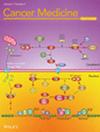Prognostic Comparison of Complete vs. Incomplete Radiofrequency Ablation for Colorectal Liver Metastases: A Multicenter Prospective Study
Abstract
Background
Radiofrequency ablation (RFA) is a curative treatment for colorectal liver metastases (CLMs) in selected patients. NCCN guidelines recommend RFA for both unresectable and select resectable CLMs when complete ablation with adequate margins is feasible. While RFA can achieve oncologic outcomes comparable to surgery in well-selected patients, residual tumors are associated with a poorer prognosis.
Objectives
To identify predictors of residual tumor after percutaneous RFA for CLMs and evaluate their impact on overall survival (OS) and new intrahepatic metastases (NIHM).
Methods
We prospectively included patients with CLMs who underwent percutaneous RFA from November 2019 to November 2022. Dynamic contrast-enhanced computed tomography assessed CLMs before and after RFA. Residual tumor was defined as active tumor visible immediately post-ablation or within 4–8 weeks, within 1 cm of the ablation zone. Data from three centers formed a developmental cohort, validated with patients from a fourth center. Cox regression and Kaplan–Meier analysis assessed local tumor progression-free survival (LTPFS), NIHM, and OS.
Results
Among 200 patients (mean age 61 years, 126 men) with 410 tumors, independent predictors of residual tumors included perivascular tumor location (odds ratio [OR] = 6.673), tumor size ≥ 20 mm (OR = 3.925), and minimal ablative margin (OR = 0.599). These factors also predicted LTPFS. NIHM was more frequent in the residual tumor group than in the complete RFA (cRFA) group (p = 0.002). Median OS was 45 months, shorter in the residual tumor group (30 vs. 48 months, p = 0.009). Patients with NIHM who received transarterial chemoembolization combined with hepatic arterial infusion chemotherapy had a median OS of 43 months, compared to 34 months with RFA alone (p = 0.039).
Conclusions
A non-perivascular tumor location, tumor size < 20 mm, and a sufficient ablation margin are essential for achieving complete RFA. Residual tumors are associated with increased NIHM and shorter OS.


 求助内容:
求助内容: 应助结果提醒方式:
应助结果提醒方式:


